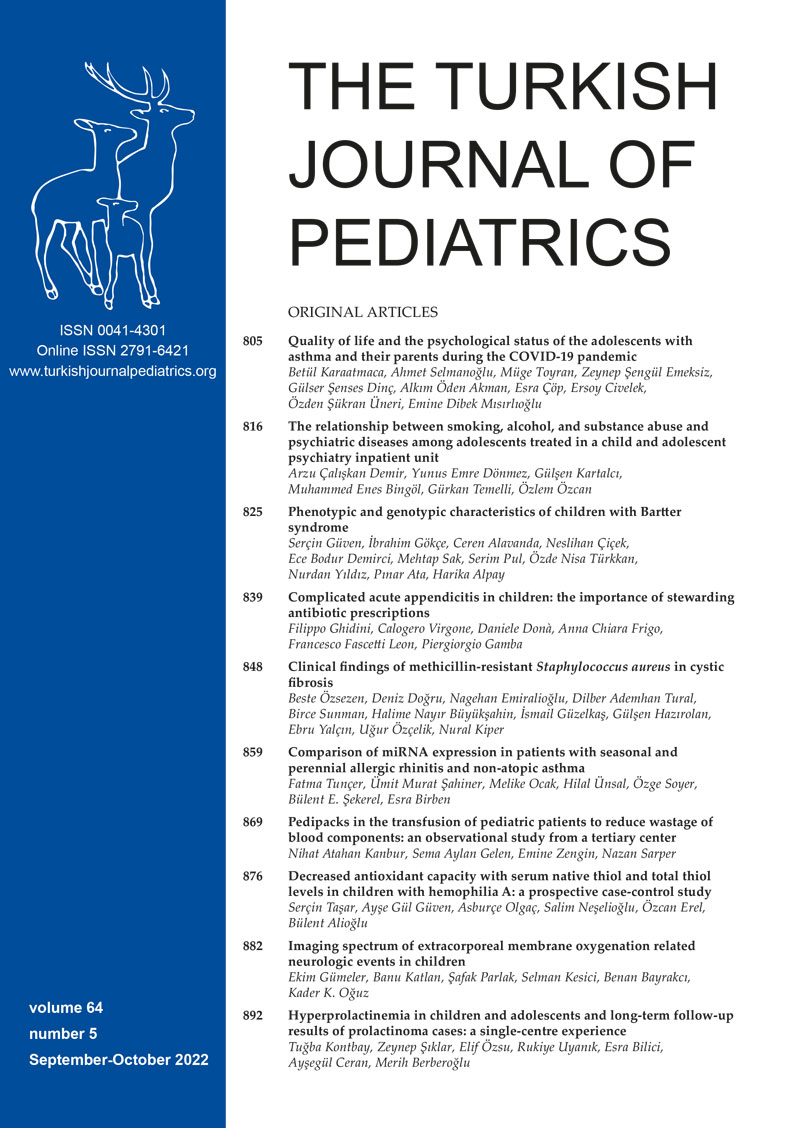Abstract
Background. Hyperprolactinaemia refers to increased circulating prolactin and is divided into functional and pathological hyperprolactinaemia. Prolactinoma is the most common cause of severe hyperprolactinaemia. Prolactinomas are rare in children. Treatment outcomes and long-term follow-up data in children are insufficient. Dopamine agonists are the first step in the treatment of prolactinomas. There are no recommendations supported by a high level of evidence regarding the dose and duration of cabergoline treatment.
Methods. Patients with hyperprolactinaemia were evaluated for etiological, clinical, and follow-up characteristics. The case files of patients with high prolactin levels who were followed up in our clinic between 2001 and 2019 were reviewed retrospectively.
Results. 27 cases (20 female, 7 male) with hyperprolactinemia were detected. The median age of the cases was 15 years (0.3-17.4). Prolactinoma was detected in 40.7% of the cases (n=11). Among these cases, six were macroadenomas. The median prolactin level was 118 ng/mL (34-4340) in those with prolactinoma and 60 ng/mL (22-200) in the hyperprolactinaemia group (p=0.007). In the prolactinoma group, the median age at presentation in macroadenoma cases (13.8 years) was lower than in microadenoma cases (17 years) (p=0.06). There was a negative correlation between prolactin level and height SDS (r=-0.770, p=0.06). In all cases, the median initial cabergoline dose was 0.5 mg/week, and prolactin levels returned to normal within an average of 2.6±2.4 months. Cabergoline treatment achieved a 50% reduction in adenoma size in the first year of treatment without high doses.
Conclusions. Prolactinoma consists of an important group among hyperplolactinemia in children. In our study, prolactinoma was detected in 40.7% of children with hyperplolactinemia, and children with prolonged use (over 4 years) tolerated cabergoline well and prolactin levels normalized without high doses. Follow-up is required for relapse after discontinuing the treatment.
Keywords: cabergoline, hyperplolactinemia, prolactinoma
Copyright and license
Copyright © 2022 The Author(s). This is an open access article distributed under the Creative Commons Attribution License (CC BY), which permits unrestricted use, distribution, and reproduction in any medium or format, provided the original work is properly cited.














